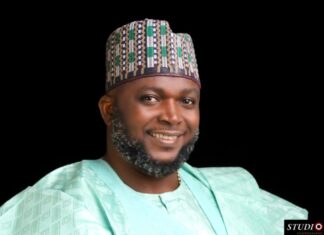After three days of peaceful demonstrations marking the one year anniversary of Michael Brown’s fatal shooting in Ferguson, Mo., yet another African-American man was shot by police there. While the facts are still unclear, the tragedy will surely add to the national protests challenging our racially biased structures of criminal injustice.
A week earlier, a young, unarmed man was shot to death by a police officer in Seneca, South Carolina. Only this young man was not black, but white.
According to CNN, Zachary Hammond was fatally shot while in a Hardee’s parking lot. He was 19 years old and on a date. The police officer was conducting a drug investigation and claims that he shot Hammond in self-defense when the unarmed teenager drove his car at him.
A small amount of marijuana was found in the front passenger compartment. Police said the target of the investigation was not Hammond but his date. An independent autopsy showed, however, that Hammond was shot in the back, not the front, contradicting the official story.
“He was a 19-year-old, 121-pound kid killed basically for a joint,” the family attorney Eric Bland said.
CNN reported that if this had been an African-American victim, it would have received national attention. That is true now, but only because an active movement of demonstrators have made it so. In fact, virtually the only protests to Hammond’s death were issued by #BlackLivesMatter activists on social media.
One year after Michael Brown’s fatal shooting in Ferguson, unarmed black men are still seven times more likely than whites to die by police gunfire, according to a new study by the Washington Post.
So far this year, the Post reports, 24 unarmed black men have been shot and killed by police — one every nine days. The Post reports that 585 people in total have been shot and killed by police through August 7. (The Guardian database reports that 700 have been killed by police.)
There is no question that African-American men are at greatest risk. After the Michael Brown killing in Ferguson, national protests have forced reform of the police and of mass incarceration policies onto the national agenda. The names of those who died from police violence — Michael Brown, Eric Garner, Samuel DuBose, Walter Scott, Tamir Rice, Freddy Gray, Sandra Bland and more — are etched in public memory because demonstrators have demanded justice for them.
The non-violent protests of demonstrators and the black church have forced community after community to respond. After Ferguson, and with the spread of cameras that have caught the police in lies, the police are no longer completely immune. In 24 states, reform measures — many focused on requiring body cameras — have been introduced. These are merely the first stirrings of change. But the killings haven’t stopped.
While African-Americans are at disproportionate risk from the structural and human biases of our criminal justice system, we should not forget that working and poor people of all races suffer from police excessive use of force. Police kill more whites than blacks.
Of the 700 killings it has recorded, The Guardian reports that 340 were white, 179 black and 101 Hispanic. The Post reports that African-American men were 40 percent of the unarmed deaths, but whites and Hispanics made up the majority.
The system has a class bias as well as a race bias. An investigation by Alternet’s Zaid Jilani revealed that in the first five months of this year, 95 percent of police killings occurred in neighborhoods with median family incomes under $100,000. There were no killings in neighborhoods with median family incomes of $200,000 or above.
Not surprisingly, lower-income whites are more likely to say police abuse of authority is on the rise than middle- or upper-income whites.
Excessive force puts white lives at risk, as well as those of blacks and Hispanics. But the silence of the white community and of the white church is deafening. The victims of police abuse are left to seek justice on their own.
We need people of conscience in the white community to join with the growing movement grounded in the African-American community to demand reform. Too often, police don’t live in the communities they patrol. They are armed to the teeth, but often receive too little training in how police can help build a community rather than simply occupy it.
People of all races and all incomes care about safe streets. They want their children protected; their parents able to walk outside with security. This is as true of impoverished African American neighborhoods as it is of upscale suburbs. But one year after Ferguson, it’s clear we all have a stake in dramatic reform of the American way of policing, if the police are to be trusted as protectors and not threats.
• Rev. Jackson is founder and president, Rainbow/PUSH Coalition













